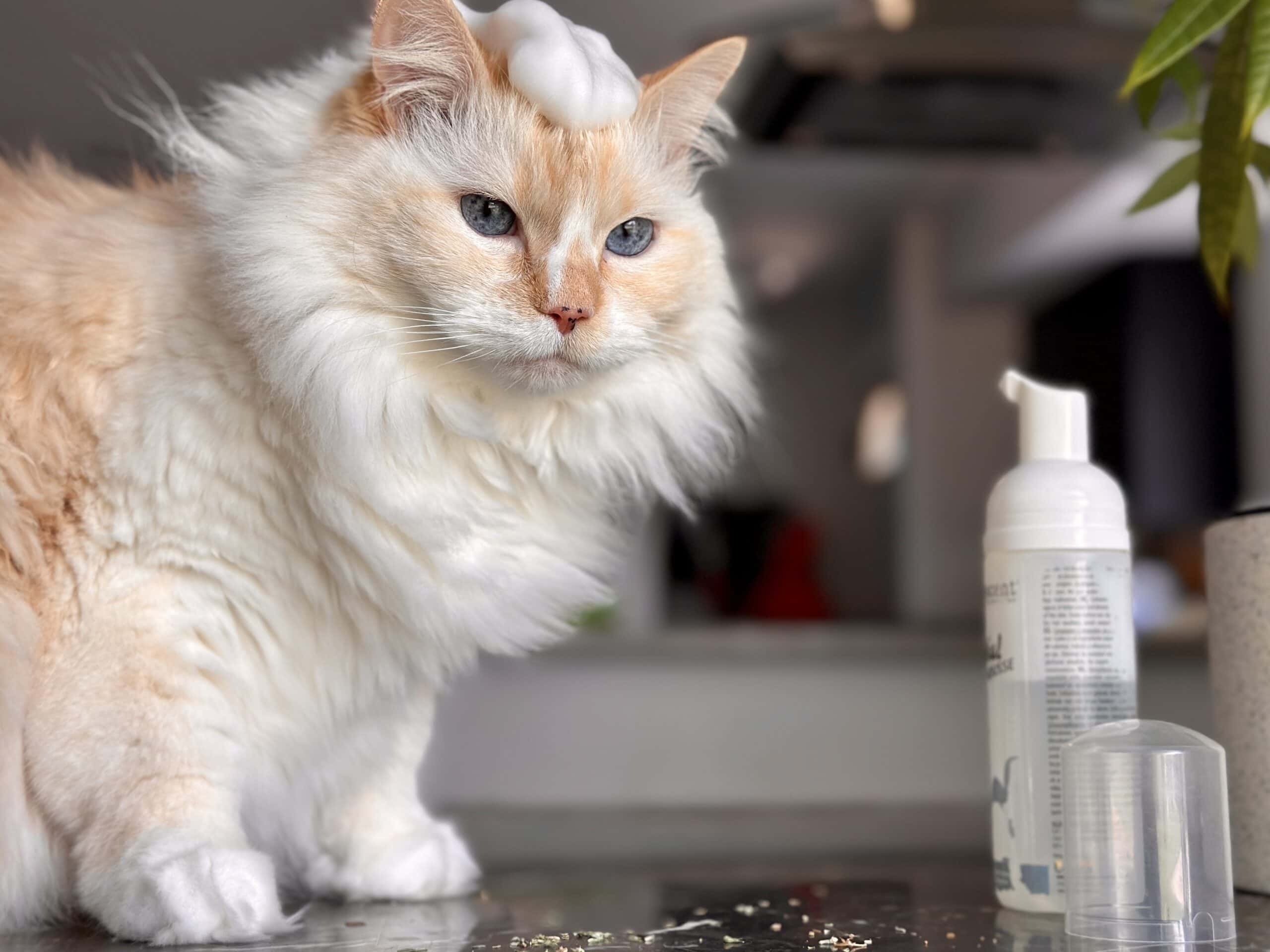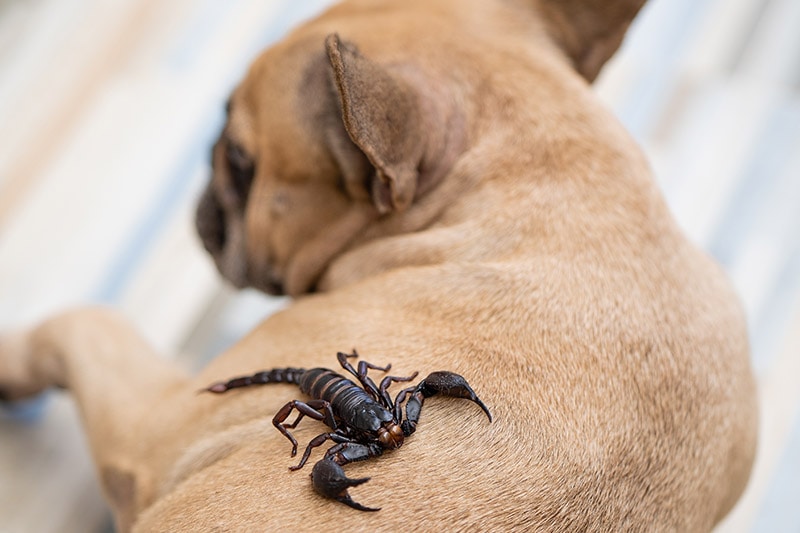Do Cats Fight to the Death? How to Stop Them

Updated on
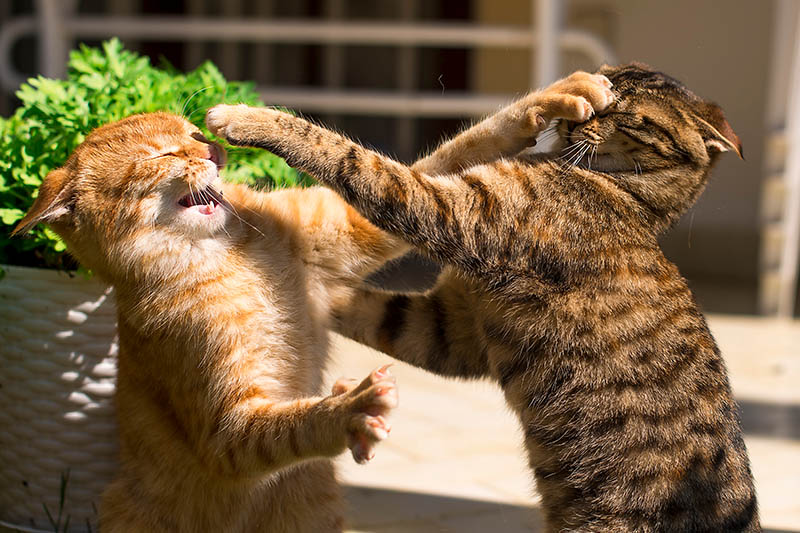
Cats are formidable animals. They are equipped with sharp claws and teeth for protection and hunting. However, on some occasions, these peaceful animals may turn on each other and start a fight. Coupled with quick reflexes, the impressive arsenal becomes a lethal weapon.
Fortunately, catfights rarely result in death. Most cats will employ tactics such as growling, tail wagging, and back arching to intimidate their opponent. These non-lethal means will scare away the weaker contestant.
If the intimidation tactics are not working, a few scratches will drive the message home. If this, too, doesn’t work, both cats will use their teeth.
What Causes Cats to Fight?
There are many causes of domesticated and feral catfights. Here are some of them.
1. Territory Disputes
Territory protection is an evolutionary technique that allows cats to stake their claims over food resources and mating rights. They will patrol and protect their turf day and night. A fight will erupt if a neighbor’s cat strays into the protected territory.
To avoid injuries, neighboring cats will not engage in territorial fights thanks to invisible markers left by a scent from glands around the cheeks, paws, and urine markings. In a household with more than one cat, they will mark and protect their territory together. When socialized cats meet, they will sniff and start grooming each other. This reduces tension and affirms their bond.
2. Mating Rights
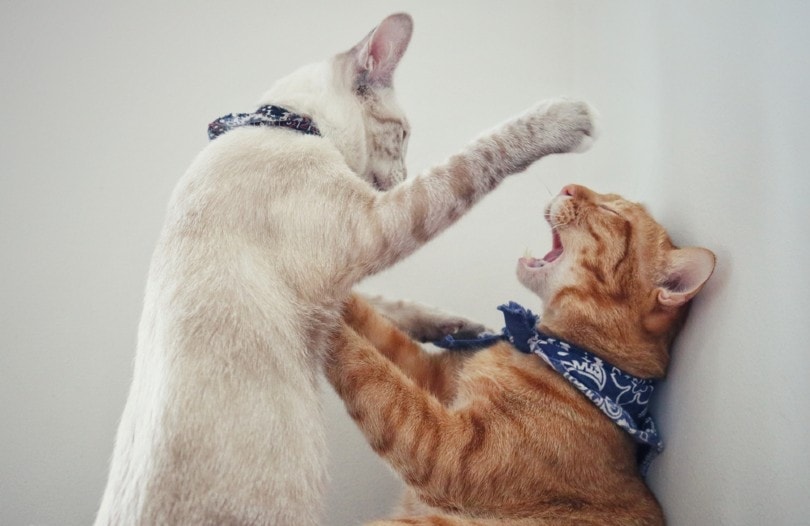
Nature has designed animals to multiply and spread their genes through mating and reproduction. In wild animals, mating time is the most stressful period, especially for the dominant male. Other males will try to take over the alpha position by force.
If there is a female cat in the vicinity ready for mating, male cats will hang around. With each cat trying to fend off the other, fights will start.
Mating rights fights are the most dangerous since cats are driven by instincts and will not stop until one cannot continue. Additionally, the involvement of many cats may result in extensive injuries.
3. Protecting Offspring
As the adage goes “the most dangerous lion is one with cubs.” The same applies to a molly (a female cat). It viciously attacks any cat or human who strays too close to their litter.
This behavior is natural, and by warding off potential danger, the kittens have better survival chances.
4. Play Fights
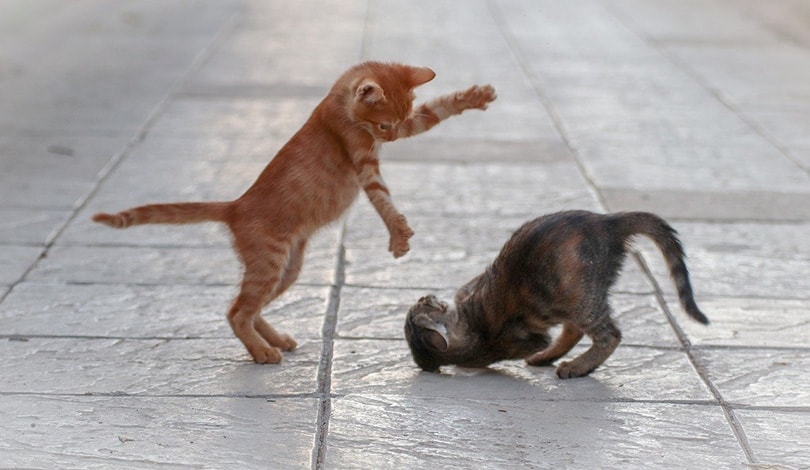
Adolescent cats love letting off excess steam by play fighting. It is important for social, physical, and cognitive development.
According to the National Library of Medicine, the behavior should not be interrupted, and what unifies the game is it involves turn-taking. However, small skirmishes will arise if the game becomes serious and one cat refuses to back down. In this case, you may need to intervene and separate them.
5. Aggression
Unneutered cats have a wide range of hormones affecting their behavior. Other causes of aggression are stress, the introduction of a new pet or person in the house, fear, and the owner’s absence.
How Do You Know if Your Cat Has Engaged in a Fight?
Sometimes cats may fight when you are not around. It is important to know this in order to remove the stimuli or treat the injured animal. Here are signs your cat got involved in a fight.
- Change of behavior
- Lethargy
- Loss of appetite
- Puncture marks
- Fever
- Limping
The 5 Ways to Stop Catfights
Naturally, cats will stop fighting when one of the opponents quits. They may take a few hours or even days. But if you see or hear them fighting, it’s best to intervene and separate them.
1. Interrupt Fighting Cats

You can interrupt fighting cats by clapping and making loud noises to scare them. If that doesn’t work, spray water on them. Cats are not fond of water and will avoid its source. This automatically separates them.
Note: as much as you may be tempted to use brute force, never hit a cat.
2. Protect Your Cat
Tomcats love escaping out of the house to patrol the neighborhood. If you suspect there is a fertile female around, it is time to keep your male indoors. Though the cat will not understand what you are doing, it is better to keep it indoors until the female cat has moved on or her heat is over to avoid your cat coming into contact with other males. If you are not planning to breed your cat, a neutering procedure will help prevent fights and undesired litters.
3. Increase Resources

When resources such as litter boxes, pet beds, and food do not satisfy all the cats, small squabbles are bound to happen. Make sure there is enough to go around.
4. Neutering and Spaying
The reproductive system releases hormones that play a crucial role in the behavior of animals. At the peak of the reproduction cycle, you may notice your cat becoming aggressive, unsettled, and stressed up. During neutering, a veterinarian will remove a large section of the reproductive system. In male cats, the process involves the removal of the testis. In female cats, it is known as spaying—a surgical intervention that removes the ovaries and the uterus.
Desexing is highly recommended by rescue groups. In some countries, desexing is performed on all rescued animals before adoption.
5. Use Cat-Calming Pheromones
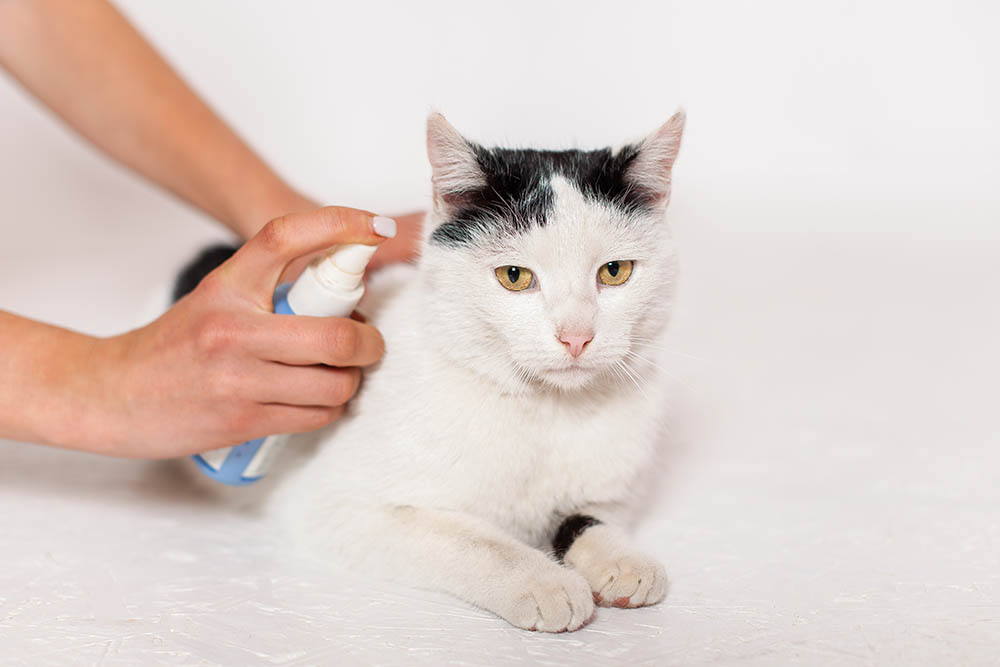
Cat calming pheromones reduce anxiety and make the animal feel more secure. A secure and relaxed cat will rarely engage in a fight.
Conclusion
Cats often fight for mating rights, territory, and protection of kittens. These fights are rarely lethal but may result in dangerous secondary infections. In general, most cats will know when to stop fighting, as they’ll instinctively want to avoid injuries. That said, there may be times when you should intervene if possible to avoid injuries and disease in your feline.
Featured Image Credit: Mariya Ilmaz, Shutterstock





